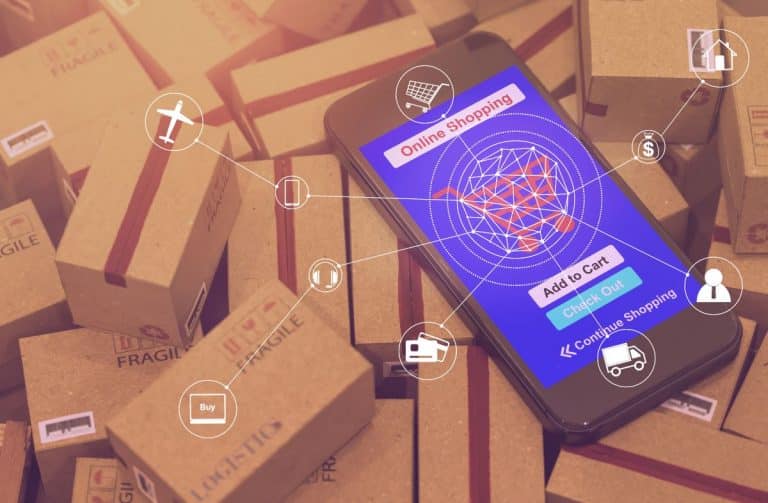In the dynamic landscape of eCommerce, success hinges on understanding and capitalizing on every conceivable opportunity to engage with customers. One such powerful concept that has gained prominence in recent times is the idea of “micro-moments.” These are brief, intent-rich moments when consumers turn to their devices to act on a need, whether to learn something, do something, discover something, or buy something. In this blog post, we delve into the significance of micro-moments and the impact SKU-level analysis can have on eCommerce success.
The Essence of Micro-Moments
Micro-moments are the heartbeat of the modern consumer’s journey. They occur when users instinctively reach for their smartphones or other devices to fulfill an immediate need. These moments are characterized by their brevity and high intent, making them a goldmine for businesses that can identify and respond to them effectively.
Understanding the different types of micro-moments—such as “I-want-to-know,” “I-want-to-go,” “I-want-to-do,” and “I-want-to-buy”—is crucial for eCommerce success. By comprehending the specific needs users have in these micro-moments, businesses can tailor their strategies to provide timely and relevant solutions.
SKU-Level Analysis: Unveiling Consumer Patterns
To truly harness the power of micro-moments, eCommerce businesses must dive deeper into SKU-level analysis. SKUs, or Stock Keeping Units, represent unique product identifiers that enable businesses to track inventory and sales accurately. Analyzing customer behavior at this granular level offers insights that can be transformative for eCommerce strategies.
1. Identifying High-Performing SKUs:
SKU-level analysis allows businesses to pinpoint which products resonate most with consumers during micro-moments. By identifying high-performing SKUs, companies can optimize their marketing efforts, ensuring they are prominently featured during critical decision-making moments.
2. Personalizing the Shopping Experience:
Understanding SKU-level data enables eCommerce platforms to offer highly personalized experiences. By leveraging this information, businesses can recommend products based on a customer’s past interactions and preferences, making each micro-moment engagement more meaningful and likely to result in a conversion.
3. Managing Inventory Effectively:
SKU-level analysis aids in efficient inventory management. Businesses can ensure they are well-stocked with products that are likely to be in demand during specific micro-moments, preventing stockouts and missed opportunities.
4. Optimizing Pricing Strategies:
SKU-level data can also inform pricing strategies. By analyzing consumer behavior in micro-moments, businesses can adjust pricing dynamically to maximize revenue and capitalize on price-sensitive moments.
Seizing Micro-Moment Opportunities
With a solid understanding of micro-moments and SKU-level data, eCommerce businesses can implement strategies to seize opportunities effectively.
1. Real-Time Marketing Campaigns:
Leverage micro-moments by launching real-time marketing campaigns that align with consumer needs. Use SKU-level data to promote products that are currently in demand and likely to convert during specific micro-moments.
2. Optimized Mobile Experience:
Since micro-moments often occur on mobile devices, ensure your eCommerce platform provides a seamless and optimized mobile experience. This includes responsive design, quick load times, and easy navigation to facilitate swift transactions.
3. Strategic Content Placement:
Utilize SKU-level insights to strategically place content, such as product recommendations and promotions, at key touchpoints in the customer journey. This ensures that users encounter relevant information during their micro-moment experiences.
4. AI-Powered Personalization:
Implement artificial intelligence (AI) and machine learning algorithms to enhance personalization. By continuously analyzing SKU-level data and user behavior, these technologies can predict and respond to micro-moments with unparalleled accuracy.
Harnessing Data for Continuous Improvement
As eCommerce businesses embark on the journey of seizing micro-moments, it’s crucial to view SKU-level analysis not as a one-time endeavor but as an ongoing process for continuous improvement. Here’s how businesses can ensure they stay ahead of the curve:
1. Data Iteration and Refinement:
Regularly revisit and refine your SKU-level data analysis. Consumer behaviors evolve, and what may have been a high-performing SKU in the past might not hold the same appeal in the future. Continuously update your insights to stay abreast of changing trends and preferences.
2. Feedback Loops:
Establish feedback loops that incorporate customer insights. Encourage customers to provide feedback on their experiences during micro-moments. This valuable information can be used to enhance SKU-level analysis and refine strategies for better alignment with customer expectations.
3. Collaboration Across Departments:
Break down silos within your organization by fostering collaboration across departments. SKU-level insights shouldn’t be confined to the marketing team alone; involve product development, customer support, and other relevant departments to ensure a holistic approach to meeting customer needs in micro-moments.
4. Adaptability in Technology:
Embrace agile and adaptable technology solutions. The eCommerce landscape is dynamic, and technology evolves rapidly. Ensure that your data analytics tools and AI algorithms can flexibly adapt to changing consumer behaviors and market dynamics.
Looking Ahead: The Future of Micro-Moments in eCommerce
As technology continues to advance and consumer behaviors evolve, the landscape of micro-moments in eCommerce will undoubtedly undergo further transformations. Businesses that stay ahead of these changes by consistently leveraging SKU-level analysis will be poised to not only meet but exceed customer expectations.
The future might bring innovations such as augmented reality (AR) for virtual try-ons, voice-activated shopping experiences, and even more sophisticated AI algorithms for predictive and personalized recommendations. SKU-level analysis will remain a cornerstone, providing the necessary foundation for businesses to adapt and thrive in this dynamic environment.
Conclusion
In the ever-evolving eCommerce landscape, the ability to recognize and capitalize on micro-moments can be a game-changer. SKU-level analysis provides the necessary granularity to understand consumer behavior intimately, enabling businesses to tailor their strategies for maximum impact.
Micro-moments represent a powerful avenue for eCommerce success, and SKU-level analysis is the compass that guides businesses through this landscape. By understanding consumer behavior at the granular level of individual products, businesses can craft strategies that resonate with customers during those fleeting but impactful micro-moments, leading to increased engagement, loyalty, and ultimately, sustained success in the competitive world of eCommerce.
By seizing micro-moment opportunities through personalized experiences, targeted marketing campaigns, and optimized inventory and pricing strategies, eCommerce businesses can position themselves at the forefront of their industries, meeting the needs of today’s fast-paced and discerning consumers. In this era of micro-moments, success lies in the details, and SKU-level analysis is the key to unlocking them.
Unleashing the Power of Micro-Moments with Cluster
As eCommerce continues to evolve, Cluster remains at the forefront, equipping businesses with the tools they need to harness the true potential of micro-moments and SKU-level analysis. For those aiming not just to keep up but to lead in the eCommerce space, Cluster is the key to unlocking new dimensions of success. Book a demo now.




